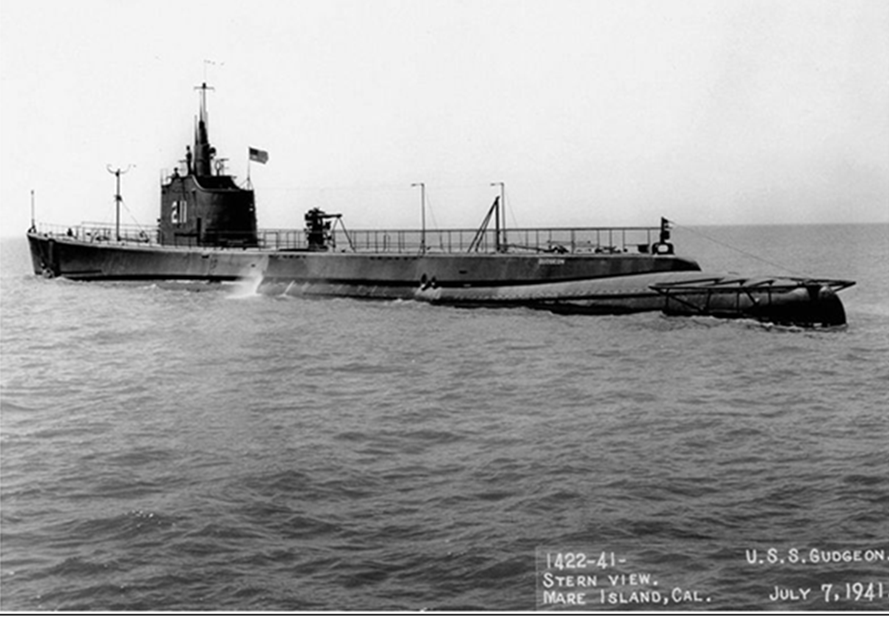Tipped off by Commander Joe Rochefort using Radio Intelligence from Station HYPO, USS Gudgeon (SS 211) became the first U.S. submarine of World War II to sink an enemy warship. On 27 January 1942, the United States Navy submarine USS Gudgeon (SS 211) was on her return voyage from a war patrol off the Bungo Strait in Japanese waters and was 240 nautical miles (280 mi) west of Midway Atoll in the Northwestern Hawaiian Islands when she received a Radio Intelligence message informing her that I-18, I-22, and I-24 were approaching her. She steered to intercept them, but did not encounter them.
While submerged and searching for them, however, she detected the sound of high-speed propellers off her port bow at 09:00 local time. She then sighted I-73 at a range of 5,000 yards, identifying her as an “I-68-class submarine” with a deck gun forward of her conning tower and at least six men on her bridge, making 15 knots (17 mph) on a heading of 255 degrees True. Gudgeon fired three Mark 14 torpedoes at I-73 at a range of 1,800 yards at 09:07 local time, and then lost sight of her in heavy seas. One minute and 45 seconds after firing the torpedoes, Gudgeon′s crew heard two explosions, after which I-73′s propeller noises stopped. Gudgeon returned to periscope depth and saw no sign of I-73. She claimed only to have damaged I-73, but Station HYPO, a U.S. Navy signals intelligence unit in Hawaii, confirmed that Gudgeon had sunk I-73. Sunk at 28°24′N 178°35′E, I-73 was the first warship ever sunk by a U.S. submarine.


27 January 2024 at 15:20
side note: I have a silverplated napkin ring from the IJN (Japanese Imperial Navy) submarine I-24 in my curio.
LikeLiked by 1 person
27 January 2024 at 19:10
Interesting story, Mario! Thanks very much for posting this.
Run Silent, Run Deep!
Andy McKane
LikeLike